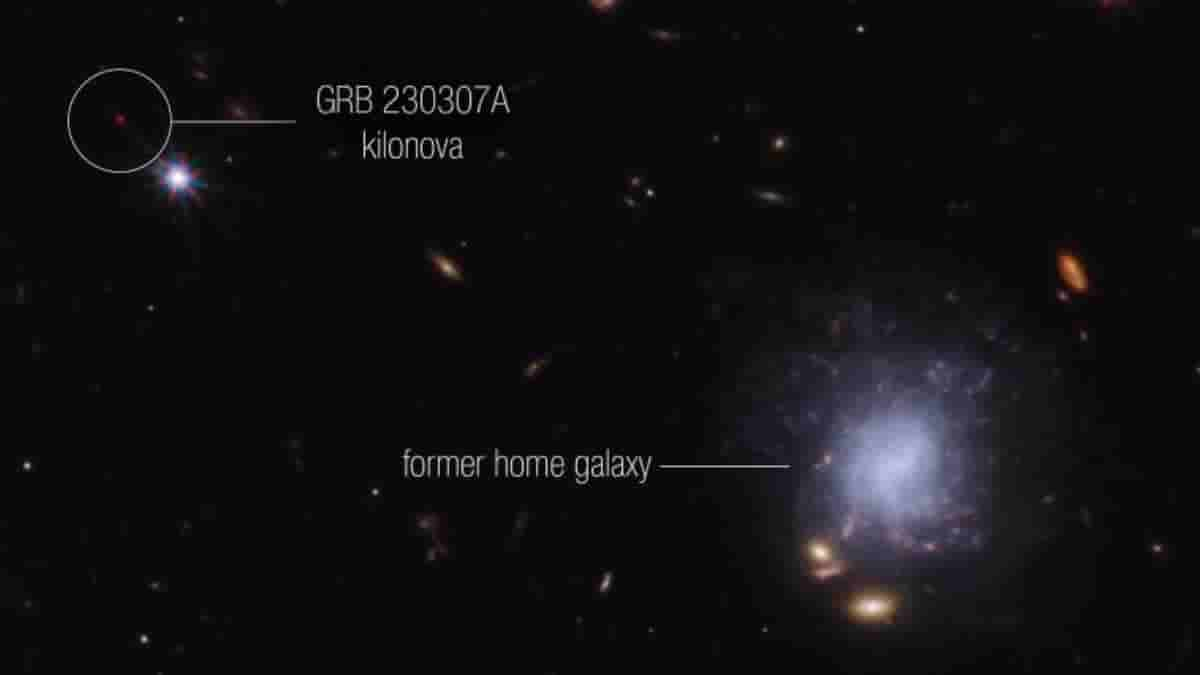NASA detects heavy element behind the GRB 230307A Kilonova Emission, with the help of James Webb Space Telescope

NASA has always been using its various telescopes for notable space exploration and groundbreaking discoveries. You can check out some of such discoveries and explorations, which we have earlier covered here.
Now, in its latest discoveries, NASA reported to have detected the Heavy Element from Star Merger, while also being the first to detect it.
For some time, NASA has been incorporating the technologies of telescopes like the James Webb Space Telescope, Fermi Gamma-ray Space Telescope, Neil Gehrels Swift Observatory, etc., for a particular purpose. The scientists have been trying to assess and figure out an exceptionally bright gamma-ray burst, GRB 230307A. The goal has been to identify the neutron star merger, which generated an explosion resulting in the burst.
NASA obtained mid-infrared (mid-IR) imaging and spectroscopy of the James Webb Space Telescope, 29 and 61 days after the burst. The spectroscopy showed an emission line at 2.15 microns. With this, NASA interpreted the chemical element as Tellurium and concluded the chemical element as the reason behind the explosion. NASA scientists are also of the view that other elements near Tellurium on the periodic table, like Iodine are also supposedly present among the explosion’s ejected material. Such an explosion, produced by a neutron star merging with a black hole or another neutron star is called a kilonova.


